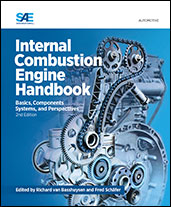Video

The New Audi A6/A7 Family - Aerodynamic Development of Different Body Types on One Platform
2011-11-17
The presentation describes the aerodynamic development and optimization process of the three different new models of the Audi A6/A7 family. The body types of these three models represent the three classic aerodynamic body types squareback, notchback and fastback. A short introduction of the flow structures of these different body types is given and their effect on the vehicle aerodynamic is described. In order to achieve good aerodynamic performance, the integration into the development process of the knowledge about these flow phenomena and the breakdown of the aerodynamic resistance into its components friction- and pressure drag as well as the induced drag is very important. The presentation illustrates how this is realized within the aerodynamic development process at Audi. It describes how the results of CFD simulations are combined with wind tunnel measurements and how the information about the different flow phenomena were used to achieve an aerodynamic improvement.


